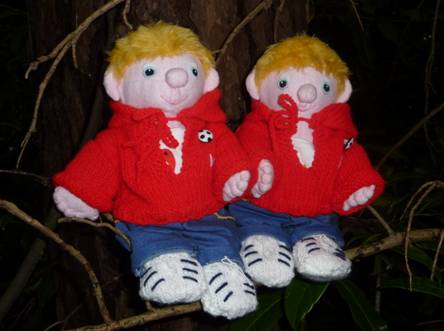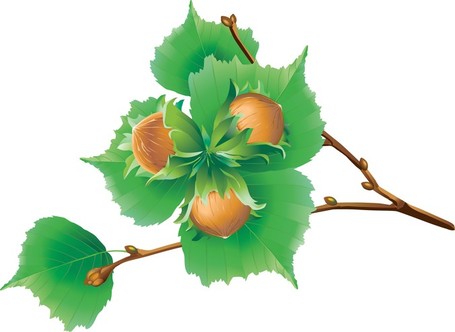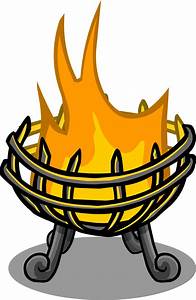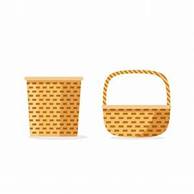
Salty Sam’s Fun Blog for Children
Number 422
Trugs
Hello Everyone

Auntie Alice has a tool shed outside that is full of useful things to use in the garden.
There are tools to dig over the soil, tools to keep the hedges neat and tools to keep the lawns healthy.
Auntie Alice knows just what she needs to use for any job because she is an experienced gardener.
One of the things she finds very useful to have is something called a trug.
The full name is actually a Sussex trug.
Sussex is a county (area) in the south of England.
Trugs are light and strong and easy to carry over your arm or in your hand.
You can collect fruit, vegetables, eggs and mushrooms in them, or carry small hand tools around in them.
Some people like to pad the bottom with straw or something like that if they are collecting something delicate like berries.
Trugs are a beautifully crafted, traditional basket made from wood.
The handle and frame is traditionally made from sweet chestnut wood which is collected from coppiced woodland. Sweet chestnut wood is very hard-wearing.
The cradle is made from willow which is harvested from marshland. This kind of wood is light but still very strong. The material that the trug makers use might even be off-cuts from a cricket bat maker. Cricket bats are made from willow.
Autumn is the time to collect these materials for trug makers to use.
Trug makers work in a workshop called a truggery.
l like that word!
There are a few traditional truggeries still around today making trugs in the same way that they have been made for a very long time.
The small trunks are split into two lengthways by using a tool that looks like a small axe. This process is called cleaving.
Once the trunks have been split, the wood will dry out more quickly – because it has more surface area.
The chestnut pieces and the willow pieces are both shaved to the right size and shaped with a sharp blade.
The chestnut strips are put into a hot steamer in order to make them softer and suppler.
The willow is soaked in a tank of rainwater to produce the same effect.
When the wood is very malleable (soft and easy to move) it is ready to be made into a trug.
The trug maker has different sizes of frames in his or her workshop and a chestnut strip is pulled around the frame while it is still hot and then secured together with nails to create a handle. lt is attached to a rim and the two are nailed together where they cross.
The willow strips are then secured inside the rim to create the cradle.
Everything is nailed into place and the results are quite beautiful.
Trugs were produced in Sussex for local people working on the land to use since way back, but when a trug maker called Thomas Smith took a selection of his wares in the Great Exhibition of 1851, no less a person than Queen Victoria put in an order for some – and they became nationally known.
Farm-workers were using them to hand pick crops right up until the middle of the last century.
During WWll a workforce of women called the Land Army were working on farms trying to grow and harvest enough food to feed the population. There were more women working on the land than tractors or other machinery.
A good trug will probably last you a lifetime.
Nowadays, they are exported all over the world.
You might know what sweet chestnuts are like because you might eat them at Christmas. They are usually roasted before they are eaten because this makes the thin skin under the brown shell much easier to peel off.
Before you start roasting them you must pierce the brown outside covering with the sharp point of a knife – otherwise they will explode in the heat!
This is a job for an adult because these skins are quite slippery.
Sweet chestnut were traditionally roasted on braziers on the streets of big cities for people walking in the street to buy as snacks way before there was popcorn or take-way pizza.
Today, there are still roast chestnut stands on the streets of Europe.
Auntie Alice has bought four child-size trugs to put in her shed for the children to use when they help her in the garden. They each have their name written inside.
You may have a trug yourself, but if it is one especially made for a child, your one might be made out of plastic.
Nowadays, trugs can be round or square as well as oval. You can even get them on the top of walking sticks for people who need support when they walk around the garden.
Auntie Alice keeps a special clean one on a kitchen shelf to take out in the garden in the summer to put her knitting into!
lf you like my blog, please support it by telling all your friends and followers about it.
Thank you!
And see you again next Fun Friday!
Love and kisses
Salty Sam

www.christina-sinclair.com


Bill and Bob’s Joke of the Week![]()
![]()
Bob: Why was the mushroom always being invited to parties?
Bill: l don’t know. Why was the mushroom always being invited to parties?
Bob: Because he was a really fungi!

Salty Sam © Christina Sinclair 2015
Unauthorized use and/or duplication of material from this blog without express and written permission from this blog’s author and owner is strictly prohibited.
Links may be used to www.christina-sinclair.com

Picture Gallery



Sweet chestnut
 Cricket bat
Cricket bat
 Roasted sweet chestnuts
Roasted sweet chestnuts
 Brazier
Brazier



 THE SALTY SAM NEWS DESK
THE SALTY SAM NEWS DESK

Last Saturday morning, Bill and Bob’s dad woke up in a funny mood. Well, they thought he was acting strangely anyway.
They told me all about it after Sunday lunch.
He came down to breakfast quite determined to organize their day.
He said that he had had a terrible week at work and he wanted to try and forget all about it.
Bill and Bob’s dad works in an office. He told them that he does very important top secret work for the government. It is all very hush-hush.
I haven’t told them any different.
Their dad said that he wasn’t going to sit around all day thinking about the stressful week he had had.
He wasn’t going to just mope around in front of the box.
He was going to take the twins to the swimming pool and have some father and sons time.
Then he was going to take the whole family out for a lovely slap-up meal that evening.
Bill and Bob’s mum thought that was a lovely idea and went off to sort herself out a nice outfit to wear and do her hair.
He said she could book the restaurant of her choice.
He said that he would help the boys get their homework done first and there was to be no messing about and procrastinating – that means putting things off.
The boys could see that he meant business and jumped to it.
Their dad said that they would have an early, light lunch and then they would go to the pool and the boys could show him how well they were getting on with their swimming lessons and diving.
He wanted to tell them how proud he was of their achievements because sometimes parents don’t tell their children that they are proud of them; and they should.
He said that when someone excels (is really good at) at one thing, that one thing usually helps them to get on really well at work.
But only doing one thing really well doesn’t give you a happy, fulfilled life.
You had to think about all aspects of your life to be really good at that.
Really brainy people who got really fat and had no friends might be good at their job might not be so good at having a happy life.
Bill and Bob didn’t really know what he was talking about; they suspected he was moaning about his boss again. But they did their homework in double quick time and the three of them headed off to the swimming pool to have some fun.


*********************
TO ADVERTISE ON THIS BLOG
PLEASE CONTACT:
christina.sinclair.ads@aol.co.uk
*********************

 Quick Quiz
Quick Quiz
What are these things that help you garden?
Rearrange the letters to find out
- thoudech
- warlanke
- tronwehald
- breerwhalow
- frekgradon
- midethergrem
- moebs
- treesacus
- waenglerd
- tainwcernga




lt’s the Weekend!

HOW TO MAKE A TlNY KNlTTED BASKET
This tiny knitted storage basket would be useful for keeping tiny things like rings in.
This might be a new knitting stitch for you to practice, but it is a very small item to make.

KNITTED STORAGE BASKET SIDES (KNIT TWO)
Using 4mm knitting needles and green dk yarn cast on 18 stitches
Sl1 (k2, p2) repeat the last 4 stitches until 5 stitches remain k2 p3
Repeat this row once
Sl1 (p2, k2) repeat the last 4 stitches until 5 stitches remain p2 k3
Repeat this row once
Repeat the last 4 rows twice
Knit 4 rows of garter stitch
Cast off
KNITTED STORAGE BASKET ENDS (KNIT TWO)
Using 4mm knitting needles and green dk yarn cast on 14 stitches
Sl1 (k2, p2) repeat the last 4 stitches until 5 stitches remain k2 p3
Repeat this row once
Sl1 (p2, k2) repeat the last 4 stitches until 5 stitches remain p2 k3
Repeat this row once
Repeat the last 4 rows twice
Knit 4 rows of garter stitch
Cast off
KNITTED STORAGE BASKET BASE (KNIT ONE)
Using 4mm knitting needles and green dk yarn cast on 14 stitches
Knit 4 rows of garter stitch
Cast off
TO MAKE UP
With inner sides together and using over-sew stitching sew the bottom edges of the basket sides to the base of the basket and then sew up the corners.
Fold the garter stitch top over and secure the corners in place with catch stitches


Please note that the material on this blog is for personal use and for use in classrooms only.
It is a copyright infringement and, therefore, illegal under international law to sell items made with these patterns.
Use of the toys and projects is at your own risk.
©Christina Sinclair Designs 2015


Quick Quiz Answers
- Dutch hoe
- lawn rake
- hand trowel
- wheelbarrow
- garden fork
- hedge trimmer
- besom
- secateurs
- lawn edger
- watering can



